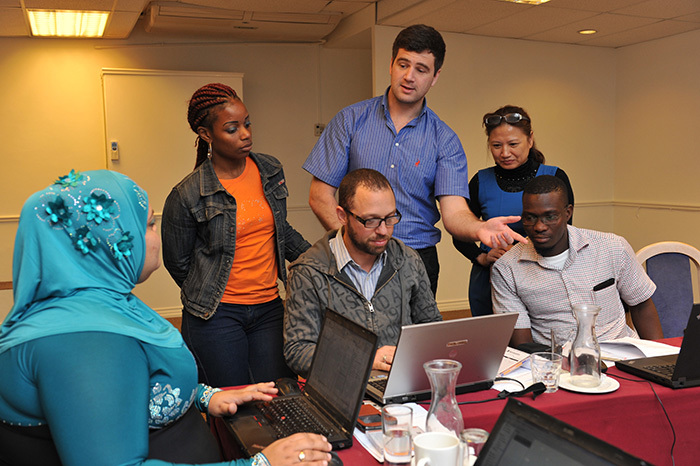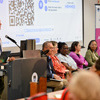UCT team's HIV-monitoring software exported
22 September 2014 | Story by Newsroom
Representatives from Mozambique, Malawi, Vietnam and Pakistan were in Cape Town recently for TIER.Net training '“ learning how to operate an electronic register for monitoring HIV- and TB-infected patients, developed by a team from UCT.
The software will be used to monitor and evaluate antiretroviral (ARV) treatment in those countries, and follows hot on the heels of its roll-out to 3 000 clinics in South Africa.
A collaborative effort
A collaborative effort '“ between UCT's UCT's Centre for Infectious Disease, Epidemiology and Research (CIDER); the Canadian International Development Agency; the US Centres for Disease Control and Prevention; and the World Health Organisation (the funders), together with valuable input from the Western Cape and national government teams '“ TIER.Net was developed because paper registers keeping track of HIV patients became too unwieldy. Although an online application (eKapa 2) had been developed for this purpose, it could not be used by all clinics, due to bandwidth constraints. TIER.Net '“ which operates offline, only requiring a computer '“ was developed to serve in the interim, until clinics are connected.
CIDER worked closely with a software development company to design the interface and develop the necessary algorithms. "Our UCT CIDER team designs the user interface and back-end as well as writing the specifications, while the developers write the code," explains Meg Osler from CIDER, who oversaw TIER.Net's software development.
CIDER, who spearheaded the use of paper registers in collaboration with Médecins Sans Frontières and the Western Cape Government, tested and piloted the software prior to its release. The centre also oversaw the implementation of TIER.Net and eKapa 2 in the Western Cape, and trains the master implementers for the National Department of Health.
Rolled out in the Western Cape and beyond
Originally the idea was that TIER.Net would only be rolled out in the Western Cape. Soon it drew the attention of the Department of Health, however, who requested that it be made available to all clinics in South Africa. Currently there are more than 4 000 public sector clinics countrywide, with TIER.Net being used in various stages of implementation in over 3 000 facilities. TIER.Net is still in the middle of the scale-up process and may not go to all facilities, due to lack of basic resources such as electricity.
Nearly all clinics in the Western Cape have been equipped with bandwidth and can therefore cross over to eKapa 2, says Osler. "All three systems '“ paper register, TIER.Net and eKapa '“ are interoperable," she explains, adding that all three can be used to produce the same reports that feed into a single provincial and national database for ARV services.
Necessary for resource allocation
Once a quarter, TIER.Net creates a dispatch containing all the relevant information for a specific clinic, which is with emailed in or hand-delivered and verified at sub-district level before being imported into the District Health Information System (DHIS) overseen by the National Department of Health. Information gathered in this way '“ through TIER.Net, eKapa 2 or paper register '“ is then use to inform policy and resource allocation.
Story by Abigail Calata. Photo by Michael Hammond.
 This work is licensed under a Creative Commons Attribution-NoDerivatives 4.0 International License.
This work is licensed under a Creative Commons Attribution-NoDerivatives 4.0 International License.
Please view the republishing articles page for more information.










